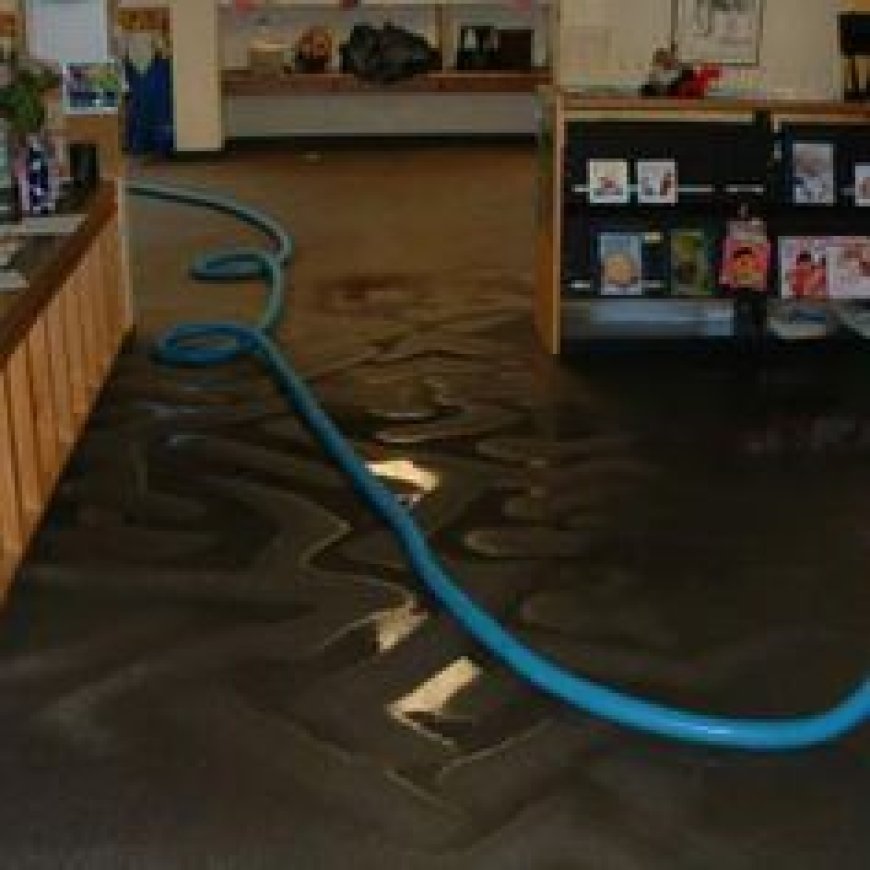How to Avoid Long-Term Damage After a Flood: Insights from Staten Island Experts
In this blog, we’ll explore the critical steps you can take to avoid long-term damage after a flood. With insights from Staten Island experts, you’ll be equipped to tackle post-flood challenges with confidence.

Floods are among the most devastating natural disasters homeowners can face, especially in coastal areas like Staten Island. They leave behind not just immediate destruction but also long-term damage that can compromise the safety, comfort, and value of your home. Acting quickly and effectively after a flood is essential to minimize damage and ensure your home is restored to its original condition.
In this blog, we’ll explore the critical steps you can take to avoid long-term damage after a flood. With insights from Staten Island experts, you’ll be equipped to tackle post-flood challenges with confidence.
The Importance of Immediate Action
When floodwaters recede, the clock starts ticking. Every minute counts in preventing irreversible damage to your home and belongings. Moisture can quickly lead to mold growth, structural deterioration, and health hazards. Here’s why immediate action is crucial:
-
Mold Growth: Mold can start forming within 24–48 hours after a flood.
-
Structural Damage: Prolonged exposure to water weakens walls, floors, and foundations.
-
Health Risks: Contaminated flood waters often carry bacteria, viruses, and harmful chemicals.
By addressing these issues right away, you can save time, money, and stress in the long run.
Step-by-Step Guide to Avoid Long-Term Damage
1. Prioritize Safety First
Before entering your flooded home, ensure it’s safe to do so. Floodwaters can compromise electrical systems, introduce toxic chemicals, or destabilize structures. Follow these precautions:
-
Turn off the electricity and gas supply to prevent shocks or leaks.
-
Wear protective gear, including rubber boots, gloves, and a mask.
-
Check for structural damage, such as sagging ceilings or buckling floors.
2. Remove Standing Water
Standing water is a breeding ground for bacteria, mold, and pests. Begin removing it as soon as possible using tools like:
-
Wet/dry vacuums
-
Pumps or sump pumps
-
Buckets for small areas
Pro Tip:
If the flood damage is extensive, consider hiring professional water extraction services to ensure thorough removal.
3. Dry and Dehumidify the Area
Even after the water is removed, moisture lingers in walls, floors, and furniture. Use these strategies to dry out your home:
-
Open windows and doors for ventilation (if weather permits).
-
Use dehumidifiers and fans to accelerate drying.
-
Remove and discard waterlogged items like carpets and insulation that cannot be salvaged.
Tools for Effective Drying:
-
Industrial-grade fans
-
HEPA-filtered dehumidifiers
-
Moisture meters to check progress
4. Prevent Mold Growth
Mold is one of the most dangerous long-term effects of flooding. To prevent its growth:
-
Clean all surfaces with a disinfectant or mold-killing solution.
-
Focus on hidden areas like behind walls, under carpets, and inside HVAC systems.
-
Regularly monitor for mold development even after initial cleanup.
Mold-Prone Areas:
-
Basements and crawl spaces
-
Kitchens and bathrooms
-
Furniture and upholstery
5. Assess and Repair Structural Damage
Floodwaters can weaken your home’s foundation and compromise its structural integrity. Key areas to inspect include:
-
Walls and Drywall: Replace any drywall that feels soft or shows discoloration.
-
Floors and Subfloors: Check for warping or sagging, and repair as needed.
-
Foundation: Look for cracks or settling caused by water pressure.
Expert Tip:
Hire a structural engineer or contractor to assess your home if you suspect significant damage.
6. Sanitize Your Home Thoroughly
Floodwaters often bring contaminants like sewage, chemicals, and debris. Proper sanitization is critical to restore a safe living environment:
-
Wash hard surfaces with hot water and detergent.
-
Disinfect areas using a bleach solution (1 cup of bleach to 1 gallon of water).
-
Replace porous items like mattresses and upholstered furniture that have absorbed contaminated water.
How Staten Island Experts Can Help
While some homeowners may opt for DIY restoration, professional services are invaluable for comprehensive cleanup and repair. Staten Island experts specialize in:
Water Extraction and Drying
Professionals use advanced equipment like high-powered pumps and thermal imaging to locate and eliminate all moisture sources.
Mold Remediation
Certified mold specialists assess, remove, and treat affected areas to ensure mold doesn’t return.
Structural Repairs
Experienced contractors handle everything from replacing drywall to reinforcing foundations, restoring your home to its pre-flood condition.
Insurance Claims Assistance
Navigating insurance claims can be daunting. Many Staten Island restoration companies help document damages and communicate with insurers to ensure you receive fair compensation.
Tips to Prevent Future Flood Damage
Floods are unpredictable, but you can take steps to minimize their impact on your home:
1. Install a Sump Pump
A sump pump prevents water from pooling in your basement by redirecting it away from your home.
2. Elevate Electrical Systems
Raise electrical outlets, switches, and appliances above the potential flood level to reduce damage risk.
3. Seal Cracks and Leaks
Inspect your foundation and walls regularly for cracks and seal them with waterproof materials.
4. Use Flood-Resistant Materials
Consider replacing carpeting with tile or concrete and using water-resistant insulation.
5. Create a Flood Emergency Kit
Include essentials like flashlights, first-aid supplies, waterproof bags for important documents, and a portable phone charger.
Conclusion: Safeguard Your Home with Proactive Measures
Floods can be overwhelming, but taking swift, informed action minimizes long-term damage and protects your home. From immediate water removal to mold prevention and structural repairs, every step plays a crucial role in recovery.
Relying on Staten Island experts ensures thorough cleanup and professional-grade restoration, giving you peace of mind during challenging times. By adopting preventive measures, you can also reduce the likelihood of future flood damage and safeguard your home and family.
Also Read: How Professional Rug Cleaning Can Bring Your Old Rug Back to Life: A Guide for Staten Island
What's Your Reaction?


















![[???????????????????????????? ???????????????? ????????????????????????] Can I Change My Name On Expedia Airlines](https://news.bangboxonline.com/uploads/images/202501/image_430x256_67915cce6df9e.jpg)



